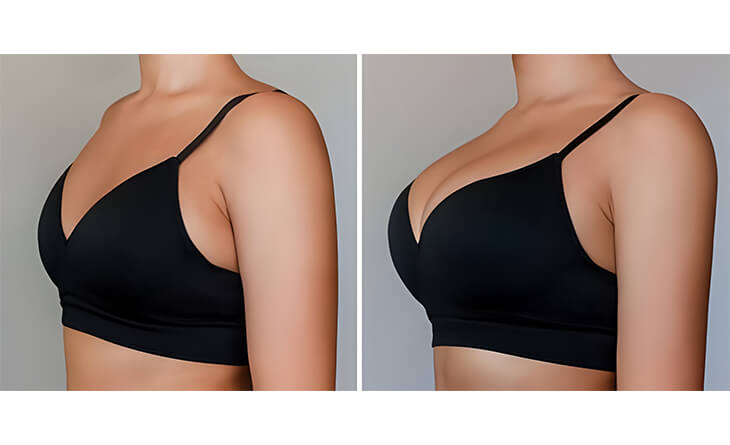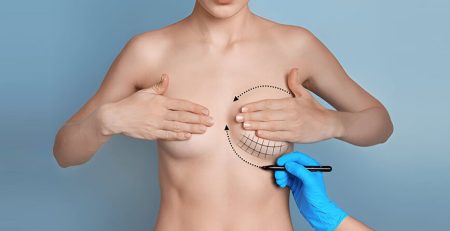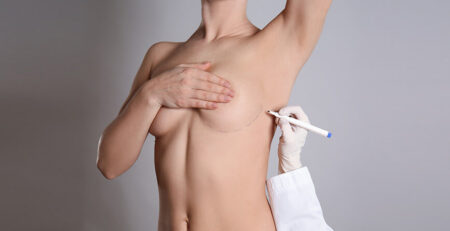Can You Breastfeed After A Breast Lift?
Breast lift surgery, also known as mastopexy, is becoming increasingly popular among women who want to restore the young look of their breasts. This surgical technique lifts and reshapes drooping breasts, which are a typical problem caused by age, pregnancy, nursing, and severe weight reduction. A breast lift, which removes extra skin and tightens the surrounding tissue, can revitalize the breast profile without drastically changing size.
Despite the cosmetic benefits, many women considering breast reduction are concerned about the procedure’s influence on future nursing ability. Whether one can breastfeed after having a breast lift is important for women in their reproductive years who want to keep the possibility of nursing future children. In this blog, we will understand the relationship between breast lift surgery and breastfeeding. Let’s know it.
Breast Lift Surgery Procedure
Breast lift surgery, also known as mastopexy, is a technique that raises and firms the breasts by removing extra skin and tightening the surrounding tissue, reshaping and supporting the new breast form. This surgical procedure treats sagging or drooping breasts, also known as ptosis, which can be caused by age, hormonal changes, gravity, pregnancy, or lactation. The objective is to elevate the breasts while improving their symmetry and general look.
Women choose a breast lift for various reasons, including restoring breast form after pregnancy and nursing, enhancing breast contour after major weight reduction, correcting asymmetrical breasts, and revitalizing their appearance for increased self-confidence. Unlike breast augmentation, a breast lift does not considerably alter breast size. Instead, it concentrates on lifting the breasts into a more youthful posture.

Impact of Breast Lift on Breastfeeding
The effect of breast lift surgery on breastfeeding is a major worry for many intended patients, as the procedure has the potential to influence milk production and delivery. Success rates can vary greatly. Some studies indicate that a considerable majority of women can successfully breastfeed after surgery, while others report a decrease in milk production or the ability to breastfeed. The diversity emphasizes the need for a qualified surgeon and procedure selection. The amount to which breastfeeding after a breast lift is disrupted is primarily determined by the exact method employed during surgery and the surgeon’s ability to preserve crucial anatomical tissues.
Peri-Areolar or “Donut” Lift: This approach requires less substantial tissue manipulation and may not influence nursing. The incision around the areola may compromise nerve sensitivity and maybe the milk ducts, but because the procedure is less invasive, many women can continue breastfeeding.
Vertical or “Lollipop” Lift: Incisions around the areola and down to the breast crease pose a greater risk of damaging the milk ducts and nerves. However, skillful surgeons frequently attempt to retain these tissues, allowing breastfeeding.
Inverted T or “Anchor” Lift: This procedure, used for severe sagging, requires more thorough surgery. While it provides significant lifting outcomes, it also has the biggest risk of disrupting breastfeeding due to the possibility of more severe milk duct and nerve damage.
Maintaining the milk ducts and nerves that stimulate milk production is critical for preserving breastfeeding capacity. Surgeons who seek to retain nursing potential will frequently adopt procedures that limit damage to the breast’s internal architecture while focusing on exterior contouring.
Factors Influencing Breastfeeding After a Breast Lift
Various factors impact breastfeeding after a breast lift, each critical to the possibility and effectiveness of breastfeeding following surgery. Understanding this can help people set realistic goals and make educated judgments regarding time and surgical alternatives. These factors may include:
Age: Younger women may not have completely formed breast tissue, which might affect both the surgery’s success and future nursing ability. Furthermore, hormonal changes caused by pregnancy following surgery might alter breast size and form, possibly impacting both appearance and function.
The Extent of the Lift and Removal of Tissue: The degree of change during breast lift surgery directly influences the breast’s ability to produce milk. A more extensive lift that requires significant tissue removal might cause more disruption to milk ducts and nerves than a modest lift, thereby jeopardizing nursing capacity.
Surgeon’s Skill and Technique: A surgeon’s skill in performing breast lifts while conserving vital anatomical features is critical. Surgeons skilled in minimizing damage to milk ducts and nerves are likelier to keep a patient’s breastfeeding ability undamaged.
Individual’s Healing Response: Personal health and the body’s ability to recover impact breastfeeding results. Some people may develop scar tissue that impairs milk flow, while others may recover so that ducts and nerves remain functioning.
By considering these aspects and contacting a board-certified plastic surgeon, patients can plan a breast lift that meets their cosmetic aspirations and nursing needs, resulting in better outcomes.

Preparation for Breastfeeding After a Breast Lift
Breastfeeding after a breast lift requires proactive communication and preparation. Here are some crucial guidelines and recommendations:
Discuss Breastfeeding Intentions with Your Surgeon:
- Be Open: During consultations, convey your intention to breastfeed in the future. This enables your surgeon to explore methods that prioritize the preservation of milk ducts and nerves.
- Ask Questions: Inquire about the influence of different surgical methods on breastfeeding after a breast lift and the surgeon’s experience with patients who successfully breastfed after surgery.
Seek Lactation Consultation:
- Pre-Surgery Education: A lactation consultant can give useful information on nursing mechanics and how surgery may impact you. Understanding probable problems will help you prepare for life after childbirth.
- Post-Birth Support: Working with a lactation consultant after giving birth will help you immediately address breastfeeding after a breast lift They can suggest increasing milk production, improving latch, and managing supply concerns, resulting in an easier nursing journey.
By taking the steps above, you may better navigate the route to nursing effectively after a breast lift, ensuring you receive medical and practical assistance throughout the procedure.
Schedule Your Consultation Today!
While breast lift surgery can affect breastfeeding, surgical technique, surgeon expertise, and individual recovery, all play important roles. Careful preparation and open communication make it possible to attain aesthetic goals without compromising nursing skills.
If you are considering a breast lift but have concerns about breastfeeding, consult with Dr Lokesh Handa, a board-certified plastic surgeon, to explore your options. He will ensure that you enjoy your breast lift results without compromising your breastfeeding ability.

Dr. Lokesh Handa
M.S, M.Ch
Sr Consultant Plastic, Aesthetic and
Hair Transplant Surgeon
Dr. Lokesh Handa, a board-certified plastic surgeon with over 15 years of experience, holds esteemed titles of M.S. and M.Ch. He serves as a Senior Consultant in Plastic, Aesthetic, and Hair Transplant Surgery.
As the Director of Med Esthetiks, his commitment to excellence is evident. Dr. Lokesh Handa is a distinguished member of renowned organizations, including ISAPS (International Society of Aesthetic Plastic Surgeons), APSI (Association of Plastic Surgeons of India), and IAAPS (Indian Association of Aesthetic Plastic Surgeons). With extensive expertise, he blends precision and artistry, offering unparalleled care in the realm of plastic surgery and contributing significantly to the advancement of aesthetic practices.
To book an appointment, call: +91-8800203431 or email: care@medesthetiks.com









